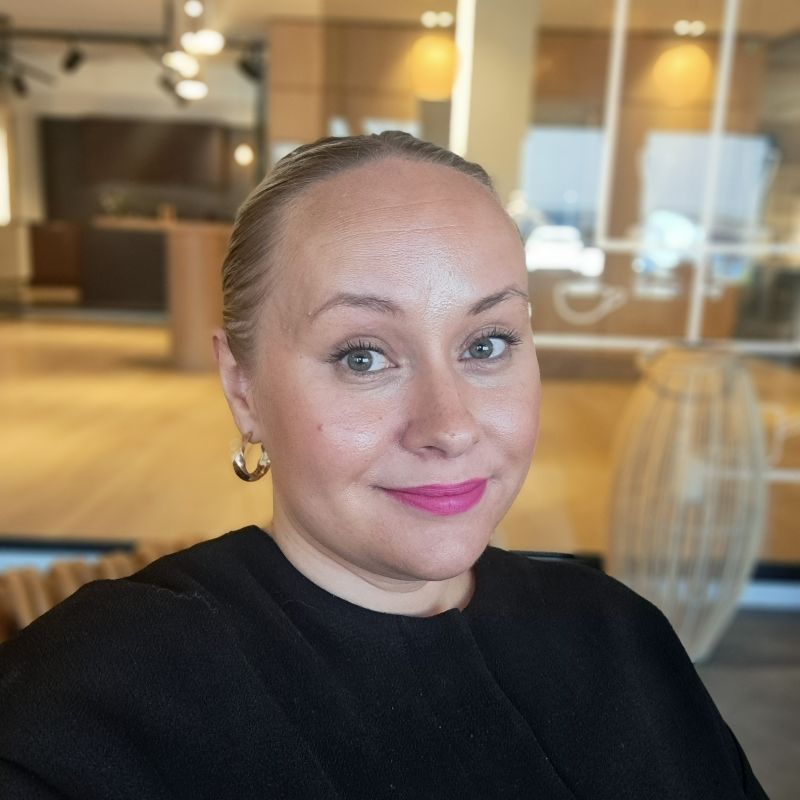Interior designer
"A good designer is able to create spaces that are beautiful and practical. It requires a visual sense, an interest in aesthetics and the ability to perceive the whole. You must also pay attention to minor details, such as the correct tone of tile joints."

- Kaisa Oikari-Virtanen
- An interior designer and entrepreneur at Kaisa Design.
- Has completed a vocational qualification in textile and interior design (artisan) and further vocational qualification for interior designers at Varia Adult Education Centre. Currently studying for a further vocational qualification in entrepreneurship.
- Nine years of work experience in the field.
Briefly explain what you do for a living.
I provide interior design services for companies and private customers. Their premises may be new, renovated or altered to update the look of the space.
How have you ended up in the profession of your choice?
For a long time, I worked in trade, but I missed having a job that would be better aligned with my values. I have always been creative and wanted to make more use of this strength. I was also interested in entrepreneurship. After my maternity leave, I decided not to return to my old job and instead began studying interior design.
Describe your typical working day or week.
During a typical week at work, I meet with a new client to discuss their wishes related to the space to be decorated. I take measurements and photos of the site, after which I draw the plan on a computer. Next, I look for suitable products, go around suppliers and hardware stores, and get samples of the material. I contact contractors and, if necessary, order the products and materials needed on behalf of the client. I also perform tasks related to the company’s operations, such as accounting and marketing.
What kind of work environment or working hours do you have?
I work mostly from home and try to do my work on weekdays. I agree on the meetings according to my client’s wishes, but other than that, I can decide on my schedules very independently.
What kind of competence or qualities are required in the profession?
The most important part of my work is the ability to listen to the client. The interior designer’s task is to understand the client’s wishes even when the client is unable to express them clearly. A good designer is able to create spaces that are beautiful and practical. It requires a visual sense, an interest in aesthetics and the ability to perceive the whole. You must also pay attention to minor details, such as the correct tone of tile joints.
The interior designer should be familiar with the basics of construction as well as materials and their manufacturing process. Competence related to issues such as lighting and electrical systems is beneficial. Proficiency in using various drawing software significantly enhances the efficiency of design work.
What is the best thing about your profession?
My work combines things that I value and enjoy. I get to work both independently and with others and get to know top professionals in the field. I enjoy creative problem-solving and being able to make my clients’ daily lives easier with good design.
What are the downsides of the profession or what seems challenging?
Economic cycles have a significant impact on the demand for services. When there is a decline in new construction, people are less likely to move house and more careful about how they spend their money. These kinds of services are often the first to go. Building up references based on previous design projects and marketing the work also takes a lot of time.
What would you tell a person considering the profession of an interior designer?
If you are passionate about interior design and have good stress tolerance, I can wholeheartedly recommend the work of an interior designer. You should carefully familiarise yourself with the different training options to find the one that best suits you. For example, you can study to become an interior designer by completing a vocational upper secondary qualification at a vocational institution or designer studies at a university of applied sciences.
How do you see the future of your profession?
I believe that people will continue to appreciate functional and beautiful spaces in the future. Technology may change the way we do design work but the need for it will not disappear.
